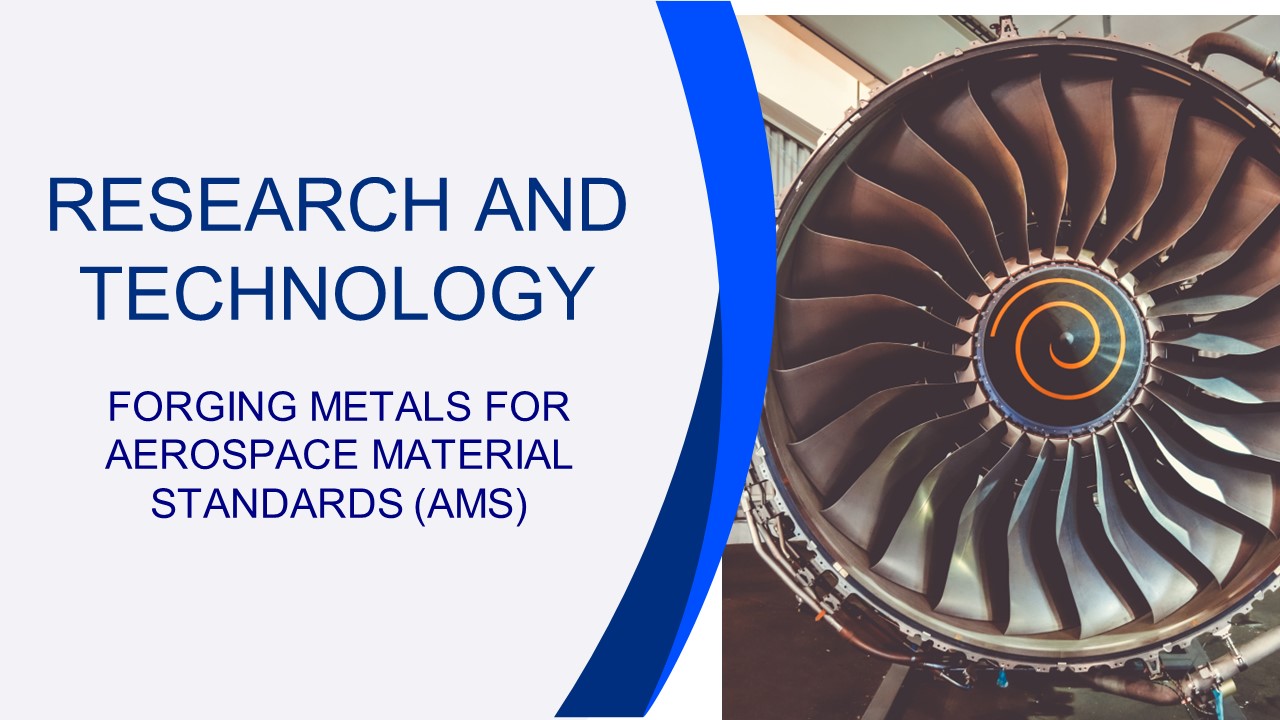Research and Technology: Forging Metals for Aerospace Material Standards - PowerPoint PPT Presentation
Title:
Research and Technology: Forging Metals for Aerospace Material Standards
Description:
Aerospace Materials Standards (AMS) act as the backbone for quality and reliability in the aerospace industry. Given the critical nature of aerospace operations where the margin for error is minimal, AMS ensures that materials used meet the highest benchmarks of quality and performance. For more at friendmetals.com – PowerPoint PPT presentation
Number of Views:2
Title: Research and Technology: Forging Metals for Aerospace Material Standards
1
RESEARCH AND TECHNOLOGY
FORGING METALS FOR AEROSPACE MATERIAL STANDARDS
(AMS)
2
TABLE OF CONTENT
01
OVERVIEW OF AEROSPACE MATERIALS STANDARDS
ART AND SCIENCE OF FORGING
02
MATERIALS COMMONLY FORGED FOR AEROSPACE
03
TECHNOLOGICAL ADVANCEMENTS IN AEROSPACE FORGING
04
QUALITY ASSURANCE AND AMS
05
CHALLENGES FORGING AMS
06
FUTURE OF FORGING FOR AEROSPACE
07
3
OVERVIEW OF AEROSPACE MATERIALS STANDARDS
(AMS)OVERVIEW
Aerospace Materials Standards (AMS) act as the
backbone for quality and reliability in the
aerospace industry. Given the critical nature of
aerospace operations where the margin for error
is minimal, AMS ensures that materials used meet
the highest benchmarks of quality and
performance.
4
HOW STANDARDS ENSURE SAFETY, PERFORMANCE, AND
CONSISTENCY
AMS offers a codified system that categorizes and
details the specifications, tolerances, testing
methods, and other vital details for materials.
By adhering to AMS, manufacturers and suppliers
ensure that the components or materials used in
aircraft construction and maintenance are safe,
reliable, and of a consistently high quality.
5
ART AND SCIENCE OF FORGING
AMS Forging is a manufacturing process where
metal is pressed, pounded, or squeezed under
great pressure into high-strength parts. In
aerospace, forging is invaluable. The resultant
components, whether they be engine parts, gears,
or structural elements, benefit from increased
density and aligned grain structures that
significantly improve strength and durability.
6
DIFFERENT FORGING METHODS
Open-die forging
A technique where metal is placed between
multiple dies that dont enclose the material
entirely
Closed-die forging
Often called impression-die forging, this method
involves metal being trapped in dies that enclose
it fully.
Isothermal forging
A specialized technique where materials are
forged at temperatures that ensure limited or no
loss of material properties.
7
MATERIALS COMMONLY FORGED FOR AEROSPACE
- Aluminum and its alloys
Aluminum is the poster child for aerospace
materials, thanks to its enviable combination of
lightness, durability, and resistance to
corrosion. When forged, its properties are
enhanced, making it ideal for various aircraft
parts, from fuselages to wings.
- Titanium and its alloys
Titanium is a heavyweight in terms of its
properties, not its mass. With an unmatched
strength-to-weight ratio and impressive
resistance to corrosion, forged titanium finds
its place in critical aircraft components,
especially those subjected to high stress or
extreme conditions.
- Nickel-based superalloys
These are the stalwarts when the going gets hot,
literally! Jet engines and turbines, which face
extreme temperatures, rely on the incredible heat
resistance of nickel-based superalloys.
8
Technological Advancements in Aerospace Forging
9
Computer-aided design (CAD) and computer-aided
manufacturing (CAM) in forging
The integration of CAD and CAM systems in the
forging industry has revolutionized the way
components are designed and manufactured. CAD
allows for precision in design, ensuring every
detail is fine-tuned before production. In
contrast, CAM ensures these designs are
seamlessly translated into the manufacturing
process, improving efficiency and reducing
errors.
10
Simulation and modeling techniques to predict and
optimize forging outcomes
With advanced simulation tools, the forging
process can be visualized in detail before actual
production.
11
Advanced machinery and automation in modern
forging processes
Modern forging has come a long way from manual
hammers and anvils. Today's advanced machinery
ensures precision and consistency. Furthermore,
automation, driven by robotics and artificial
intelligence, ensures repeatability, reduces
human errors, and can significantly enhance
production speeds.
12
Quality Assurance and AMS
13
Inspection Methods
From traditional visual checks and dimensional
measurements, the aerospace forging industry now
uses advanced techniques like ultrasonic
inspections and X-ray methods.
Heat treatments and post-forging processes to
ensure compliance with AMS
Controlled heating and cooling processes are
used post-forging to ensure that the components
meet or exceed AMS requirements in terms of
strength, durability, and other attributes.
14
Challenges Forging AMS
15
Achieving precision in complex aerospace
components
As aerospace designs become more intricate,
forging these complex shapes while maintaining
the required tolerances and specifications
becomes challenging.
16
Ensuring consistent quality in high-volume
production
With mass production, ensuring that each
component matches the quality of the previous one
is a monumental task, especially when dealing
with high-performance aerospace parts.
17
Keeping up with evolving AMS standards and
requirements
As the aerospace industry evolves, so do its
standards. Forgers must continually adapt,
updating their processes and techniques to stay
compliant with the latest AMS stipulations.
18
Future of Forging for Aerospace
19
Predictions on New Materials
Beyond the conventional metals, there's potential
in the increased use of composite materials, high
entropy alloys, and other innovative materials
that can offer improved performance attributes.
20
Potential innovations in forging technology,
influenced by Industry 4.0
With the onset of Industry 4.0, forging might see
further automation, real-time monitoring systems,
and the integration of IoT. This could translate
to "smart forging" where processes self-optimize
in real-time.
21
The role of Sustainability and Recycling
The aerospace industry is becoming increasingly
eco-conscious. The future of aerospace forging
will likely lean towards sustainable practices,
emphasizing recycling, reducing waste, and
minimizing the carbon footprint of the forging
processes.
22
LOOKING FOR TOP-NOTCH AEROSPACE FORGING SERVICES?
23
GET MORE INFORMATION
714-632-0140
www.friendmetals.com
14729 Spring Ave, Santa Fe Springs, CA 90670































